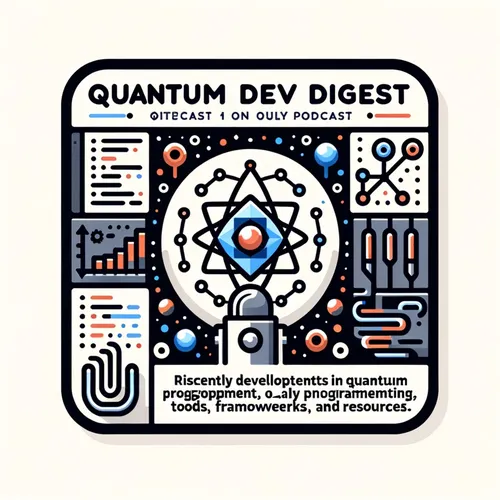HyperQ: Quantum's Cloud Moment - Parallel Computing Unleashed | Quiet Please AI
- Author
- Quiet. Please
- Published
- Mon 14 Jul 2025
- Episode Link
- https://www.spreaker.com/episode/hyperq-quantum-s-cloud-moment-parallel-computing-unleashed-quiet-please-ai--66974980
This is your Quantum Dev Digest podcast.
No time for preamble—let’s dive into what might be the most seismic shift in quantum computing this week. I’m Leo, your Learning Enhanced Operator, and today’s breakthrough might just reshape the entire landscape: Columbia Engineering’s HyperQ, a technology that lets multiple users and programs run on the same quantum computer at the same time.
Picture the bottleneck that’s long plagued quantum developers: imagine owning a top-of-the-line espresso machine that makes a single, world-class coffee at a time—but no matter how many cups people are waiting for, only one person can use it, and the rest have to queue, wasting both time and precious hardware. That’s been the reality of quantum computing for years. These million-dollar machines sat underutilized, running just one program while every other researcher or company stood in line, hoping for their turn.
But with HyperQ, we’re flipping that model. Think of it as the cloud virtualization moment for quantum hardware—now, instead of one cup at a time, it’s like everyone getting their own espresso, brewed simultaneously, with each cup perfectly crafted, no flavor cross-contamination, no delays. This is possible because HyperQ creates isolated quantum virtual machines, or qVMs, on a single quantum chip, allocating resources and intelligently scheduling jobs based on each workload’s needs. It’s a dynamic dance of precision and efficiency. The technical wizardry here is astonishing—like orchestrating multiple symphonies in a hall where, until now, only one lone violin played at a time. It’s set to be presented at OSDI ’25 in Boston and already promises a tidal wave of faster research, reduced costs, and, most importantly, accessibility for innovators worldwide.
Why does this matter for everyday life? Imagine the city’s water pipes: in the old system, only one person could shower, run the dishwasher, or water their garden at any moment—everyone else waited. HyperQ turns the main valve, letting each household draw what it needs, simultaneously and independently. This means faster drug discoveries, swifter AI breakthroughs, and more responsive climate modeling—all emerging from parallel workstreams, no longer stifled by idle machines.
Quantum, by its nature, is about possibilities—superpositions, entanglement, and uncertainty. But the traditional approach was paradoxically rigid. HyperQ invokes the true spirit of quantum mechanics: letting multiple realities, multiple computations, exist and thrive side-by-side. It’s not just more efficient; it’s more quantum.
As we stand on this threshold, it’s clear: the future of quantum computing isn’t a lonely, cold room with a humming machine. It’s a bustling city of ideas, all flowing, converging, and leaping forward—together.
Thanks for tuning in to Quantum Dev Digest. If you’ve got questions or crave deep dives on any quantum topic, just email me at [email protected]. Don’t forget to subscribe, and for more on this and other minds-bending advances, check out Quiet Please dot AI. This has been a Quiet Please Production. Catch you in the next superposition.
For more http://www.quietplease.ai
Get the best deals https://amzn.to/3ODvOta
